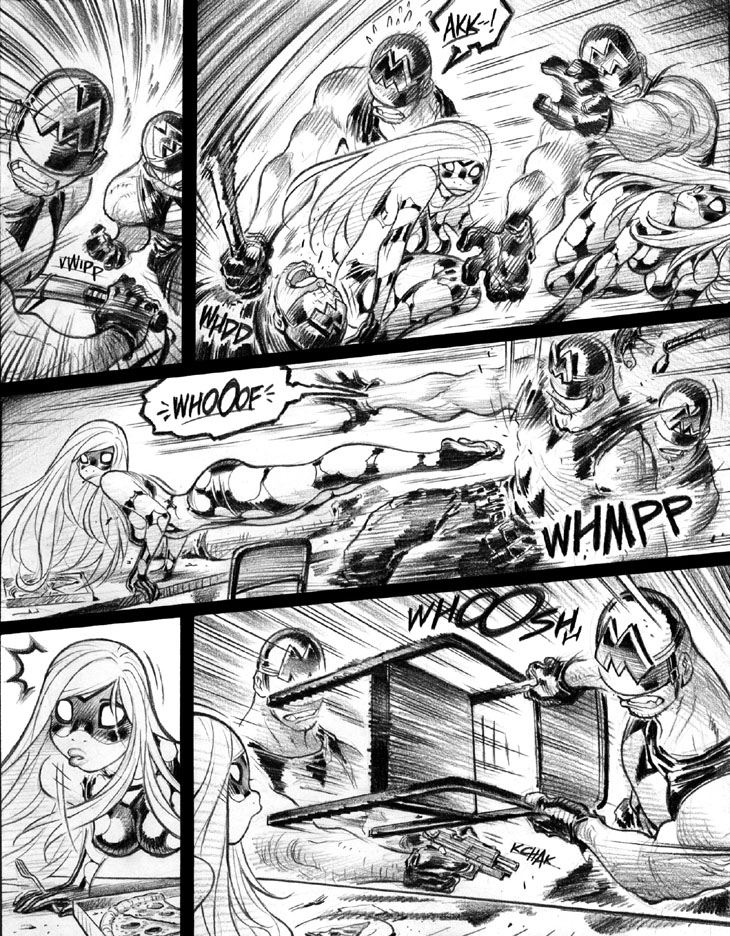Panel 2: Rare “double exposure” visual riff, here, in that we see two separate images of Emp-disguised Ninjette as she darts and dodges across the table.
Panel 3: Solid use of a panel’s shape to drive the action storytelling, as the horizontal, panoramic format of the panel forces the reader’s eye left to right, reinforcing the L-to-R motion of Ninjette’s kick.
Panel 4: Note the wee little element of Emp-disguised Ninjette’s hand snatching up that fork from the surface of the table. Soon, this will become a notable bit of the next page’s action choreography.
Also, I don’t care for the “directional flop” between panels 4 and 5, in that Emp-disguised Ninjette is facing left in panel 4 and then right in panel 5. This was a choice likely driven by the need to fit three disparate elements in a single horizontal panel—Ninjette, the chair-wielding goon, and the pistol-racking goon—but I still think it could’ve been handled better.
Panel 5: Unfortunate tangency at the bottom of this panel, where the underside of the pistol-toting goon’s hand is just barely clear of the table. That’s completely unacceptable, folks, and is a type of compositional blunder that that comic artists should avoid at all costs. (Okay, maybe not at all costs—violence and/or mayhem seem excessive—but I still strongly recommend avoiding such a tangency in your drawings.) Here’s an excellent “field guide” to spotting—and avoiding—various types of tangencies in comic-book artwork: http://schweizercomics.tumblr.
Tangencies seem to be a rarely discussed and arguably technical issue in comics artwork, but they’re easily dodged as long as you keep an eye out for ’em. Ah, but you need to know about the damn things in the first place to do so. I was looking through a number of art portfolios at a convention last week, and a distressing number of the artists had an almost pathological love of placing the top of a character’s head just barely clear of the upper panel border, a maddening form of tangency that indelibly marks one’s work as not-yet-professional. Ah, but now they know better, I hope! Go forth and “tangency sin” no more, my children.
-Adam Warren

